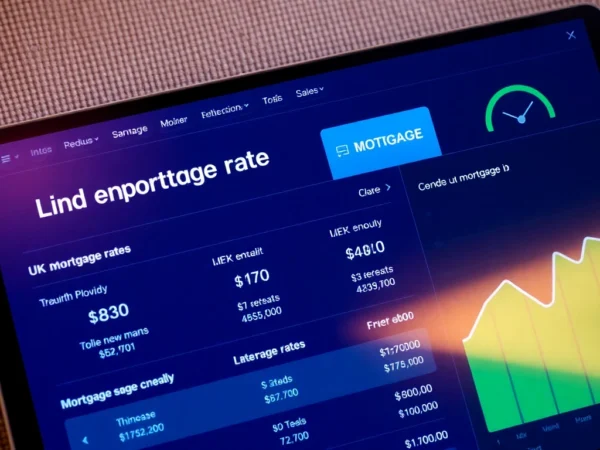Essential Property Investment Updates to Maximize Your Portfolio Growth
Understanding Current Property Market Trends
The global property market continues to demonstrate a complex blend of resilience and volatility, influenced by macroeconomic factors, geopolitical developments, and regional dynamics. Recent shifts reveal that while some markets experience stability, others face significant fluctuations, creating both opportunities and risks for investors. For example, European shares closed marginally higher, supported by defense stocks, and this cautious optimism often mirrors property market sentiment in certain regions. To navigate this landscape effectively, investors must stay informed about key indicators, such as property price trends, rental yields, vacancy rates, and policy changes, which collectively shape market outlooks.
One crucial aspect is understanding how global economic factors influence property prices. Rising interest rates, inflation pressures, and currency fluctuations can directly impact property affordability and demand. For instance, a drop in the dollar against major currencies might boost foreign investment in targeted markets. Additionally, regional performance varies—while markets like the UK and Europe show signs of marginal gains, others like China and the U.S. are subject to distinct policy and economic forces. Keeping abreast of these developments ensures more strategic investment decisions.
For detailed insights, Property Investment Updates provide real-time data and analysis to guide those looking to capitalize on emerging trends or to hedge against potential downturns. By integrating macroeconomic understanding with local market nuances, investors can better position themselves for sustained growth and risk mitigation.
Regional Market Performance and Hotspots
Regional hotspots continue to emerge as favorable locations for property investment. For instance, European markets—such as the pan-European STOXX 600—closed only marginally higher, yet specific sectors like defense-related properties and commercial developments show promising signs. Similarly, Asian markets, including the Nikkei, have extended gains, boosted by economic optimism and favorable monetary policies. Understanding these regional nuances enables investors to diversify effectively and target areas with higher potential for appreciation or income generation.
Impact of Interest Rates on Property Investments
Interest rates remain a pivotal factor affecting property investments worldwide. A drop in interest rates, often driven by central bank policies or US rate cut hopes, tends to stimulate demand by lowering borrowing costs. Conversely, rising rates can dampen activity, making financing more expensive and reducing affordability. For example, recent client strategies have centered around timing investments during periods of rate decreases to lock in favorable mortgage terms. Monitoring rate trends provides an essential edge in optimizing entry and exit points within the property cycle.
Key Indicators and Data to Watch in Property Investment Updates
Real Estate Price Trends and Forecasts
Analyzing real estate price movements provides vital insight into market momentum. Recent data reveal that gold prices soared past $3,501.59 an ounce, indicating strong inflationary pressures that often correlate with rising property prices. Forecasts suggest that post-pandemic recovery phases could lead to sustained growth in certain markets, while others face correction risks. Investors should track metrics like median home prices, price per square foot, and historical trends to identify entry opportunities and potential reversals.
Rental Yield and Vacancy Rates Analysis
Rental yields remain a core component dictating property attractiveness, especially in rental-heavy sectors. Current analysis indicates that rental yields are stabilizing in several European cities, even as vacancy rates fluctuate due to economic adjustments. For example, properties in well-established regions continue to provide attractive yields, while emerging markets may offer higher returns but with increased risk. Regularly assessing these figures allows investors to optimize cash flow and long-term appreciation prospects.
Government Policies Affecting Property Markets
Policy interventions remain a significant driver of property markets. News of potential regulations—such as the Bank of England warning Facebook of strict conditions for the UK release of Libra cryptocurrency—reflect broader government oversight aimed at safeguarding economic stability. Changes in taxation, foreign ownership rules, or development incentives can rapidly shift market dynamics. Subscribing to timely updates ensures investors adapt swiftly to regulatory shifts, maintaining compliance and capitalizing on policy-driven opportunities.
Strategies for Leveraging Property Investment Updates
Timing Your Investments Based on Market Data
Successful property investors leverage real-time market data to identify optimal entry and exit points. For instance, observing signs like stable or rising rental yields combined with modest price appreciation might indicate a good buying window. Conversely, during periods where property prices peak due to speculative bubbles, it’s prudent to adopt a cautious stance. Developing a disciplined approach to timing, supported by analytics, enhances portfolio performance and mitigates risk.
Diversification Opportunities in Different Sectors
Effective diversification involves spreading investments across various property types—residential, commercial, industrial—and geographic locations. For example, while European equities closed only marginally higher, niche sectors like defense stocks and commercial real estate exhibit potential for robust returns. Investing in different sectors can buffer against localized downturns and capitalize on emerging trends like urban regeneration or infrastructure development.
Utilizing Tech Tools to Track Property Trends
Advanced technology tools, such as AI-powered analytics platforms and property market dashboards, enable precise tracking of market fluctuations. Companies such as Meta are integrating external AI models to enhance internal decision-making, a practice that savvy investors can emulate by employing similar solutions. Using these tools reduces guesswork, provides predictive insights, and automates routine analysis—empowering investors to make more informed, timely decisions.
Case Studies and Expert Insights on Property Investment Updates
Successful Portfolio Growth Through Market Awareness
Investors who have maintained a keen eye on property updates have experienced significant growth. For example, a London-based real estate fund capitalized on the recent FTSE rebound driven by mining and banking stocks, coupled with favorable rental yields. They combined market data with strategic timing and diversification, achieving sustained growth even amid global uncertainties.
Lessons from Recent Market Fluctuations
The crypto market, with Bitcoin and Ether experiencing slowed rallies and market cap declines, underscores the importance of diversification and risk assessment. Similarly, property investors faced challenges when geopolitical tensions or policy shifts caused corrections. Effective risk management entails continuous monitoring of macroeconomic indicators, policy changes, and market sentiment to adapt strategies accordingly.
Expert Predictions for the Next Year
Experts forecast ongoing volatility but also opportunities, especially in emerging markets and sectors aligned with infrastructure or technological innovation. As global equities fluctuate, real estate markets that leverage adaptive strategies and technology will likely outperform traditional models. Staying informed through comprehensive property updates is essential for capitalizing on these upcoming shifts.
Future Outlook and Preparing for Market Changes
Emerging Trends to Watch in Property Investment
Key emerging trends include the increasing role of AI and big data in property analysis, rising popularity of sustainable and green buildings, and the integration of cryptocurrencies in transactions. For example, the upcoming release of Libra in the UK, despite regulatory hurdles, signals the growing intersection between finance and real estate. Investors should monitor these developments to position themselves advantageously.
Adapting Investment Strategies to Market Shifts
As market conditions evolve, flexibility becomes paramount. Developing agile investment plans that incorporate real-time data can help investors pivot in response to policy changes or economic shocks. Diversifying across sectors, geographies, and asset types ensures resilience against unforeseen downturns.
Long-term Planning with Updated Data Analysis
Long-term success derives from incorporating current data insights into strategic planning. Whether it’s adjusting portfolios in response to inflation data, interest rate prospects, or geopolitical developments, a dynamic approach ensures sustained growth. Regularly revisiting property investment updates and forecasts allows investors to anticipate future market trajectories and align their strategies accordingly.










